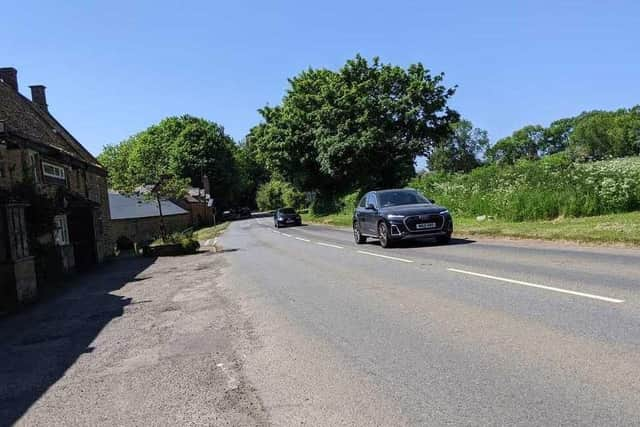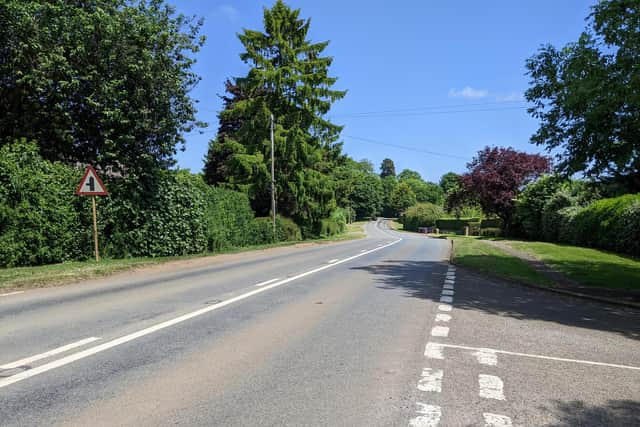Main roads through Banbury area villages are set to have speed limits reduced to 20mph
and live on Freeview channel 276
The reduction in speed limits through these and many other villages in Oxfordshire are part of a ‘transformation’ plan to make roads safer, ease congestion and reduce pollution.
The reduction from 30mph to 20mph on the A422 at Wroxton, the A44 in Chipping Norton and Enstone, the A361 through South Newington and the A4260 through Bodicote, Adderbury and Deddington are all due to go live before March, 2024.
Advertisement
Advertisement
All roads in the parishes will also be subjected to the 20mph limit.


Villages going through the legal procedures for reduction to 20mph are Adderbury, Bodicote, the Bourtons, Chipping Norton, Cropredy, Deddington, Enstone, Epwell, Great Rollright, Lower Heyford, Milcombe, Mollington, South Newington, Upper Heyford, Wardington, Wroxton and Balscote.
Some villages, including Fritwell, Finmere and Somerton have already had speed reductions introduced. Villages that want to have their 30mph limits reduced are invited to apply to be part of phase three (to be completed by March 2025) by emailing [email protected]. Individuals may apply but need support from their town or parish council and local county councillor.
Oxfordshire County Council, which is masterminding the transformation, say the council will not benefit financially from fines imposed by motorists speeding after the changes.
Advertisement
Advertisement
“20mph restrictions are legally enforceable as they are only implemented following the agreement of a Speed Regulation Order. Thames Valley Police will continue to enforce as they currently do, in line with the speed limits that are in force,” the council said.


“We will not profit from the introduction of 20mph restrictions. Speeding fines are sent to the UK treasury. Town and parish councils are encouraged to set up community speed watch programmes."
“The design of the changes will rely primarily on signs and road markings. Care will be taken in conservation areas and around historic buildings.
“Existing 30mph flashing speed signs can be changed for a 20mph version. This has proven to be a very effective way to reduce speeds within the pilot sites.
Advertisement
Advertisement
“If further measures are needed to maintain lower vehicle speeds, additional methods will be considered, for example, build-outs and variable speed messaging signs. Town and parish councils would be expected to fund these extra mitigation measures. Speed humps and Gatso cameras will not be considered.”
Certain factors will be considered to assess applications including numbers of people killed or seriously injured, minor accidents and near-misses. The assessors will take into account school walking routes and the presence of an active 30mph Gatso speed monitoring device.
A pot of £8m has been set aside to deliver the 20mph scheme which is part of ‘Vision Zero’ (the elimination of deaths and serious injuries from road traffic collisions in Oxfordshire).
"The initiative is not compulsory however the greater level of coverage we attain across the county, the greater level of compliance we will gain,” said Team 20mph. “The introduction of 20mph in our 2021/2022 pilot areas has already reduced speeds by up to 4mph. This has really benefitted the local communities and it will help to reduce the frequency and severity of accidents."
Advertisement
Advertisement
Team 20mph said: “Research by the UK Transport Research Laboratory has shown that every 1mph reduction in average urban speeds can result in a six percent fall in the number of casualties.
"It’s also been shown that you are seven times more likely to survive if you are hit by a car driving at 20mph, than if you are hit at 30mph. If a child suddenly steps in front of a car, you are much less likely to seriously injure or kill them if you keep to a 20mph limit.
“Research also shows that slower speeds encourage a smoother driving style with less stopping and starting which helps traffic to flow. Evidence from other areas shows that slower speeds encourage more people to walk and cycle.
“Driving at 20mph causes some vehicular emissions to rise slightly (mainly Heavy Goods Vehicles) and some (cars) to fall. Reduced acceleration and braking will help to reduce fuel consumption and the associated particulate emissions from items such as tyres and brakes.
Advertisement
Advertisement
“Research suggests journey times do not significantly increase. Where proposals are requested on a bus route the authority will work with the bus companies to assess the likely impact on bus journey times to enable a balanced approach to be taken.”
The council is carrying out a variety of ‘before and after’ surveys as part of the monitoring programme for the 20mph network which will be assessed a year after the completion of phase. Key representative locations will be selected and findings published on the county website.
Further monitoring will be undertaken in 2024, 2025 and again in 2029. This will enable the authority to get a balanced overview of this programme's benefits to our communities.
A county-wide marketing campaign will ensure that if a new area is changing to 20mph local residents are informed in advance. 20mph signs will mark the entrance and exit of a 20mph area where the speed limit changes. Smaller repeat signs and or road markings will supplement these signs.
Advertisement
Advertisement
If the scheme is deemed as not working, then the county will consider removing or amending it.
Applications to be included in phase 3, the last phase, are still open. If you wish for your town or parish to be included and not to miss out on this opportunity, please contact the 20mph team at Oxfordshire County Council via [email protected].